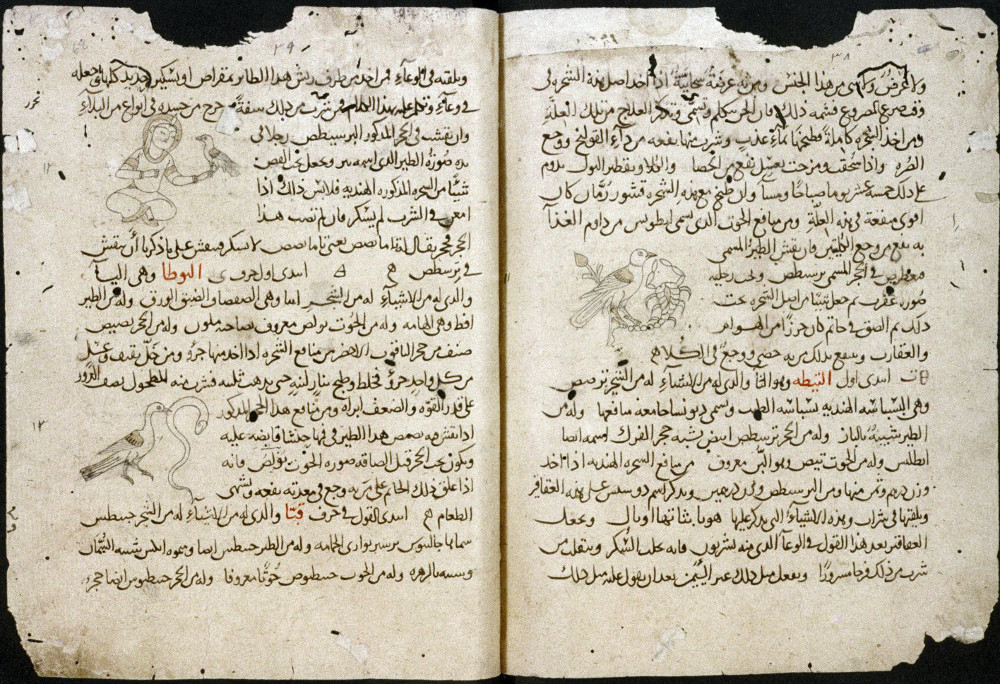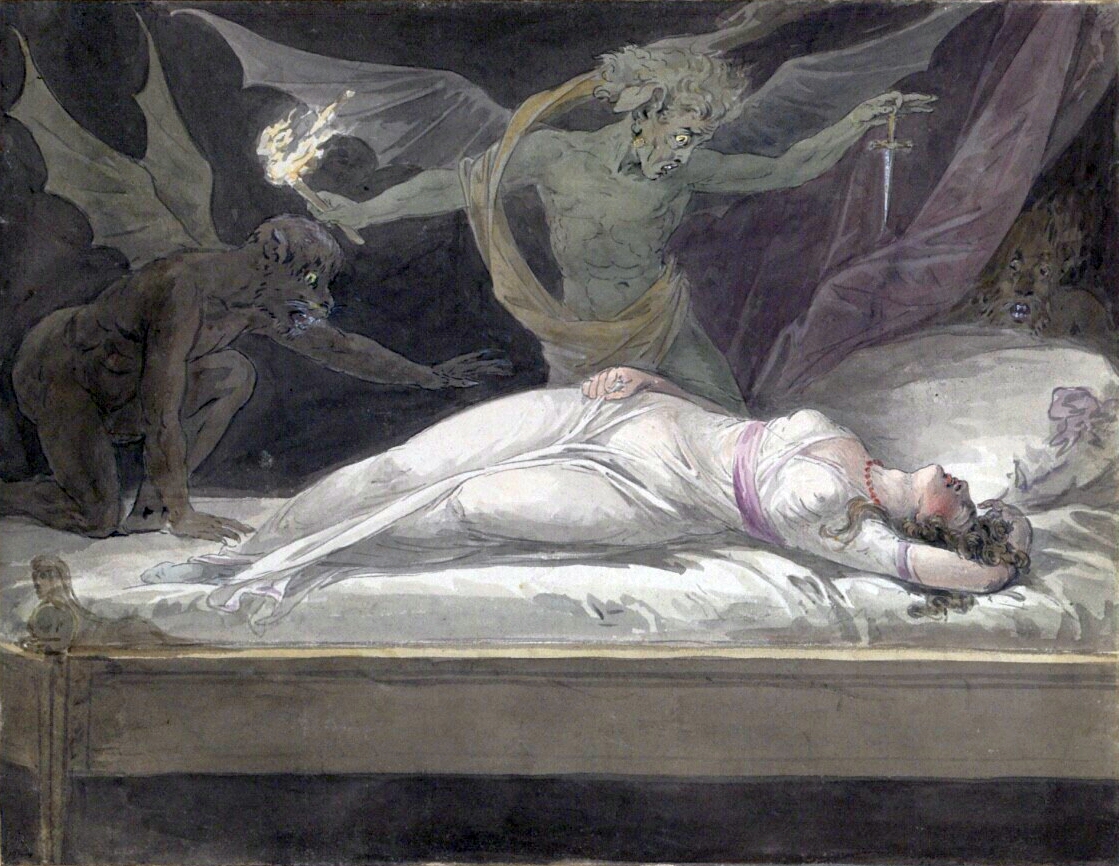|
Pascalis Romanus
Pascalis Romanus (or Paschal the Roman) was a 12th-century priest, medical expert, and dream theorist, noted especially for his Latin translations of Greek texts on theology, oneirocritics, and related subjects. An Italian working in Constantinople, he served as a Latin interpreter for Emperor Manuel I Komnenos. Oneirocriticism Pascalis compiled the ''Liber thesauri occulti'', a Latin book on dream interpretation, in 1165 but appears not to have completed it himself. The second book and the first part of the third were translated or adapted from the ''Oneirocriticon'' of Achmet and the classical treatise of Artemidoros. His are the earliest known Latin translations of excerpts from Artemidoros. In the first part of the work, Pascalis also draws on Aristotle, quoting from what he refers to as the '' liber de naturis animalium''. Pascalis works within the dream classification system of Macrobius: *''somnium'', a dream requiring interpretation *''visio'', a vision that comes true *'' ... [...More Info...] [...Related Items...] OR: [Wikipedia] [Google] [Baidu] |
Priest
A priest is a religious leader authorized to perform the sacred rituals of a religion, especially as a mediatory agent between humans and one or more deities. They also have the authority or power to administer religious rites; in particular, rites of sacrifice to, and propitiation of, a deity or deities. Their office or position is the 'priesthood', a term which also may apply to such persons collectively. A priest may have the duty to hear confessions periodically, give marriage counseling, provide prenuptial counseling, give spiritual direction, teach catechism, or visit those confined indoors, such as the sick in hospitals and nursing homes. Description According to the trifunctional hypothesis of prehistoric Proto-Indo-European society, priests have existed since the earliest of times and in the simplest societies, most likely as a result of agricultural surplus and consequent social stratification. The necessity to read sacred texts and keep temple or church rec ... [...More Info...] [...Related Items...] OR: [Wikipedia] [Google] [Baidu] |
Solomon
Solomon (; , ),, ; ar, سُلَيْمَان, ', , ; el, Σολομών, ; la, Salomon also called Jedidiah (Hebrew language, Hebrew: , Modern Hebrew, Modern: , Tiberian Hebrew, Tiberian: ''Yăḏīḏăyāh'', "beloved of Yahweh, Yah"), was a monarch of ancient Israel and the son and successor of David, according to the Hebrew Bible and the Old Testament. He is described as having been the penultimate ruler of an amalgamated Kingdom of Israel (united monarchy), Israel and Judah. The hypothesized dates of Solomon's reign are 970–931 BCE. After his death, his son and successor Rehoboam would adopt harsh policy towards the northern tribes, eventually leading to the splitting of the Israelites between the Kingdom of Israel (Samaria), Kingdom of Israel in the north and the Kingdom of Judah in the south. Following the split, his Patrilineality#In the Bible, patrilineal descendants ruled over Judah alone. The Bible says Solomon built the Solomon's Temple, First Temple in Jerus ... [...More Info...] [...Related Items...] OR: [Wikipedia] [Google] [Baidu] |
12th-century Byzantine People
1 (one, unit, unity) is a number representing a single or the only entity. 1 is also a numerical digit and represents a single unit of counting or measurement. For example, a line segment of ''unit length'' is a line segment of length 1. In conventions of sign where zero is considered neither positive nor negative, 1 is the first and smallest positive integer. It is also sometimes considered the first of the infinite sequence of natural numbers, followed by 2, although by other definitions 1 is the second natural number, following 0. The fundamental mathematical property of 1 is to be a multiplicative identity, meaning that any number multiplied by 1 equals the same number. Most if not all properties of 1 can be deduced from this. In advanced mathematics, a multiplicative identity is often denoted 1, even if it is not a number. 1 is by convention not considered a prime number; this was not universally accepted until the mid-20th century. Additionally, 1 is the s ... [...More Info...] [...Related Items...] OR: [Wikipedia] [Google] [Baidu] |
Anastasius Sinaita
Anastasius Sinaita (died after 700), also called Anastasius of Sinai or Anastasius the Sinaite, was a Greek writer, priest and abbot of Saint Catherine's Monastery on Mount Sinai. Life What little is known about his life is gathered from his own works. In Antiquity, he was often confused with the bishop and writer Anastasius I of Antioch (559–598), and the authorship of various works attributed to Anastasius of Sinai is still vigorously disputed. A canon has been tentatively accepted by modern scholars, but even among these Anastasian works there are spurious sections. His writings concern questions and answers about issues of Christian dogma, ritual, and lifestyle (catechism); sermons; and exegesis. He was fond of tracing the etymologies of key Christian terms; he was erudite in the Bible and early Patristic literature; and he had a pervasive interest in the nature of God and man, especially in the person of Christ (Christology). He was not reluctant to develop and express his ... [...More Info...] [...Related Items...] OR: [Wikipedia] [Google] [Baidu] |
Epiphanius The Monk
Epiphanius the Monk (Epiphanius Monachus, Epiphanios of Constantinople, 8th or 9th century) was a monk and priest in the Kallistratos monastery in Constantinople and author of several extant works including a life of the Virgin Mary and a life of St. Andrew the Apostle Andrew the Apostle ( grc-koi, Ἀνδρέᾱς, Andréās ; la, Andrēās ; , syc, ܐܰܢܕ݁ܪܶܐܘܳܣ, ʾAnd’reʾwās), also called Saint Andrew, was an Apostles in the New Testament, apostle of Jesus according to the New Testament. He ... ('' PG'' 120.179–286). He published the first guidebook of Jerusalem for traveling pilgrims in Greek; there is also a Slavonic translation. References Eastern Orthodox monks Roman Catholic monks Year of death unknown Year of birth unknown {{Byzantine-bio-stub ... [...More Info...] [...Related Items...] OR: [Wikipedia] [Google] [Baidu] |
Hermeticism
Hermeticism, or Hermetism, is a philosophical system that is primarily based on the purported teachings of Hermes Trismegistus (a legendary Hellenistic combination of the Greek god Hermes and the Egyptian god Thoth). These teachings are contained in the various writings attributed to Hermes (the ''Hermetica''), which were produced over a period spanning many centuries (), and may be very different in content and scope. One of the most common uses of the label is to refer to the religio-philosophical system propounded by a specific subgroup of Hermetic writings known as the 'philosophical' ''Hermetica'', the most famous of which is the '' Corpus Hermeticum'' (a collection of seventeen Greek Hermetic treatises written between c. 100 and c. 300 CE). This specific, historical form of Hermetic philosophy is sometimes more restrictively called Hermetism, to distinguish it from the philosophies inspired by the many Hermetic writings of a completely different period and nature. A more ... [...More Info...] [...Related Items...] OR: [Wikipedia] [Google] [Baidu] |
Cyranides
The ''Cyranides'' (also ''Kyranides'' or ''Kiranides'') is a compilation of magico-medical works in Greek first put together in the 4th century. Latin and Arabic translations also exists. It has been described as a " farrago" and a ''texte vivant'', owing to the complexities of its transmission: it has been abridged, rearranged, and supplemented. The resulting compilation covers the magical properties and practical uses of gemstones, plants, and animals, and is a virtual encyclopedia of amulets; it also contains material pertinent to the history of western alchemy, and to New Testament studies, particularly in illuminating meanings of words and magico-religious practices. As a medical text, the ''Cyranides'' was held in relatively low esteem even in antiquity and the Middle Ages because of its use of vernacular language and reliance on lore rather than Hippocratic or Galenic medical theory. In the ''Pseudodoxia Epidemica'', Thomas Browne described the ''Cyranides'' as "a collec ... [...More Info...] [...Related Items...] OR: [Wikipedia] [Google] [Baidu] |
Peter Brown (historian)
Peter Robert Lamont Brown (born 26 July 1935) is Rollins Professor of History Emeritus at Princeton University. He is credited with having brought coherence to the field of Late Antiquity, and is sometimes regarded as the inventor of the field. His work has concerned, in particular, the religious culture of the later Roman Empire and early medieval Europe, and the relation between religion and society. Early life Peter Brown was born in Dublin, Ireland, in 1935, to a Scots-Irish Protestant family. Until 1939, he spent winter and spring each year in the Anglo-Egyptian Sudan, where his father worked as a railway engineer based at Khartoum. For the rest of the year, he would return with his mother to Bray, in Co. Wicklow, near Dublin. Following the outbreak of war, Brown and his mother remained in Ireland, though his father did not return finally until 1948. Brown has written and spoken about the influence of the Sudanese connection on several occasions. Speaking to the ''Dail ... [...More Info...] [...Related Items...] OR: [Wikipedia] [Google] [Baidu] |
Satyr
In Greek mythology, a satyr ( grc-gre, :wikt:σάτυρος, σάτυρος, sátyros, ), also known as a silenus or ''silenos'' ( grc-gre, :wikt:Σειληνός, σειληνός ), is a male List of nature deities, nature spirit with ears and a tail resembling those of a horse, as well as a permanent, exaggerated erection. Early artistic representations sometimes include horse-like legs, but, by the sixth century BC, they were more often represented with human legs. Comically hideous, they have mane-like hair, bestial faces, and snub noses and are always shown naked. Satyrs were characterized by their ribaldry and were known as lovers of wine, music, dancing, and women. They were companions of the god Dionysus and were believed to inhabit remote locales, such as woodlands, mountains, and pastures. They often attempted to seduce or rape nymphs and mortal women alike, usually with little success. They are sometimes shown masturbation, masturbating or engaging in bestiality. I ... [...More Info...] [...Related Items...] OR: [Wikipedia] [Google] [Baidu] |
Incubus
An incubus is a demon in male form in folklore that seeks to have sexual intercourse with sleeping women; the corresponding spirit in female form is called a succubus. In medieval Europe, union with an incubus was supposed by some to result in the birth of witches, demons, and deformed human offspring. Legendary magician Merlin was said to have been fathered by an incubus. Parallels exist in many cultures. Walter Stephens alleges in "Demon Lovers", some traditions hold that repeated sexual activity with an incubus or succubus may result in the deterioration of health, an impaired mental state, or even death. Etymological, ancient, and religious descriptions The Late Latin word ''incubus'' ("a nightmare induced by a demon") is derived from Latin ''incubō'' ("nightmare, what lies down on one whilst one sleeps") and further from ''incubāre'' ("to lie upon, to hatch"). One of the earliest evident mentions of a demon sharing qualities to an incubus comes from Mesopotamia on the Sume ... [...More Info...] [...Related Items...] OR: [Wikipedia] [Google] [Baidu] |
Psychosomatic Medicine
Psychosomatic medicine is an interdisciplinary medical field exploring the relationships among social, psychological, behavioral factors on bodily processes and quality of life in humans and animals. The academic forebear of the modern field of behavioral medicine and a part of the practice of consultation-liaison psychiatry, psychosomatic medicine integrates interdisciplinary evaluation and management involving diverse specialties including psychiatry, psychology, neurology, psychoanalysis, internal medicine, pediatrics, surgery, allergy, dermatology, and psychoneuroimmunology. Clinical situations where mental processes act as a major factor affecting medical outcomes are areas where psychosomatic medicine has competence. Psychosomatic disorders Some physical diseases are believed to have a mental component derived from stresses and strains of everyday living. This has been suggested, for example, of lower back pain and high blood pressure, which some researchers have sugge ... [...More Info...] [...Related Items...] OR: [Wikipedia] [Google] [Baidu] |





.jpg)
